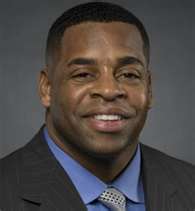Recently Sheldon Lubar, a highly respected and successful Milwaukee businessman, called upon our political leaders to return to civility. Finding that political labels are not particularly helpful, he describes his personal politics as follows:
My politics are for what is right, what makes common sense, what is decent, what will create prosperity and a good life — I am for civility. So what is civility? Webster defines civil, civility, civilization as follows:
A community of citizens. A rational and fair government.
Being polite and courteous is civil. . . . Civility is the positive and sincere consideration of others.
I believe that the founders of our great country sought to create a nation of “civility.” They sought to create a nation that elected leaders who could recognize both sides of all issues and through honest and informed debate could and would resolve differences fairly and then move ahead.
In this heavily financed election season, many are concerned with the lack of civil discourse and respectful debate in our political discussions. People disagree as to the causes of the problem and as to what is needed as solutions. On June 8th, the Marquette Law School Restorative Justice Initiative’s annual conference will present speakers who will focus on our theme for this year, “Restoring Faith in Government: Encouraging Civil Public Discourse.”
Every year we select a relevant issue to examine through a restorative justice lens by asking three critical questions: 1.) Who and what is being harmed by certain conduct? 2.) What is the nature (and the breadth and depth) of the harm? 3.) What needs to be done to work at repairing the harm? This year we chose to focus on civility in political life.
Our conference will examine whether Americans are losing faith in our ability to discuss, much less solve, our political problems. Two state senators and two former lieutenant governors will look at whether people are too discouraged to run for office or even to participate in the political process. Three nationally recognized public policy mediators will present ways to facilitate difficult but respectful discussions with people of diverse views. Speakers will talk about negative advertising and the negative blogging occurring in our print media that often looks like “recreational hostility.” Our keynote speaker, John Avlon, a senior columnist for Newsweek, will share his views on ways to heal polarization in America. We will end the conference with optimism by having a panel of enthusiastic Marquette students who have great hope for our governmental processes in the future. I believe it will be a very good day. I hope you will join us.
 Among those receiving degrees at the 2012 Marquette commencement was former Green Bay Packer linebacker George Koonce. Koonce, who took several classes at the law school while a graduate student at Marquette, received his PhD degree in Interdisciplinary Studies.
Among those receiving degrees at the 2012 Marquette commencement was former Green Bay Packer linebacker George Koonce. Koonce, who took several classes at the law school while a graduate student at Marquette, received his PhD degree in Interdisciplinary Studies.